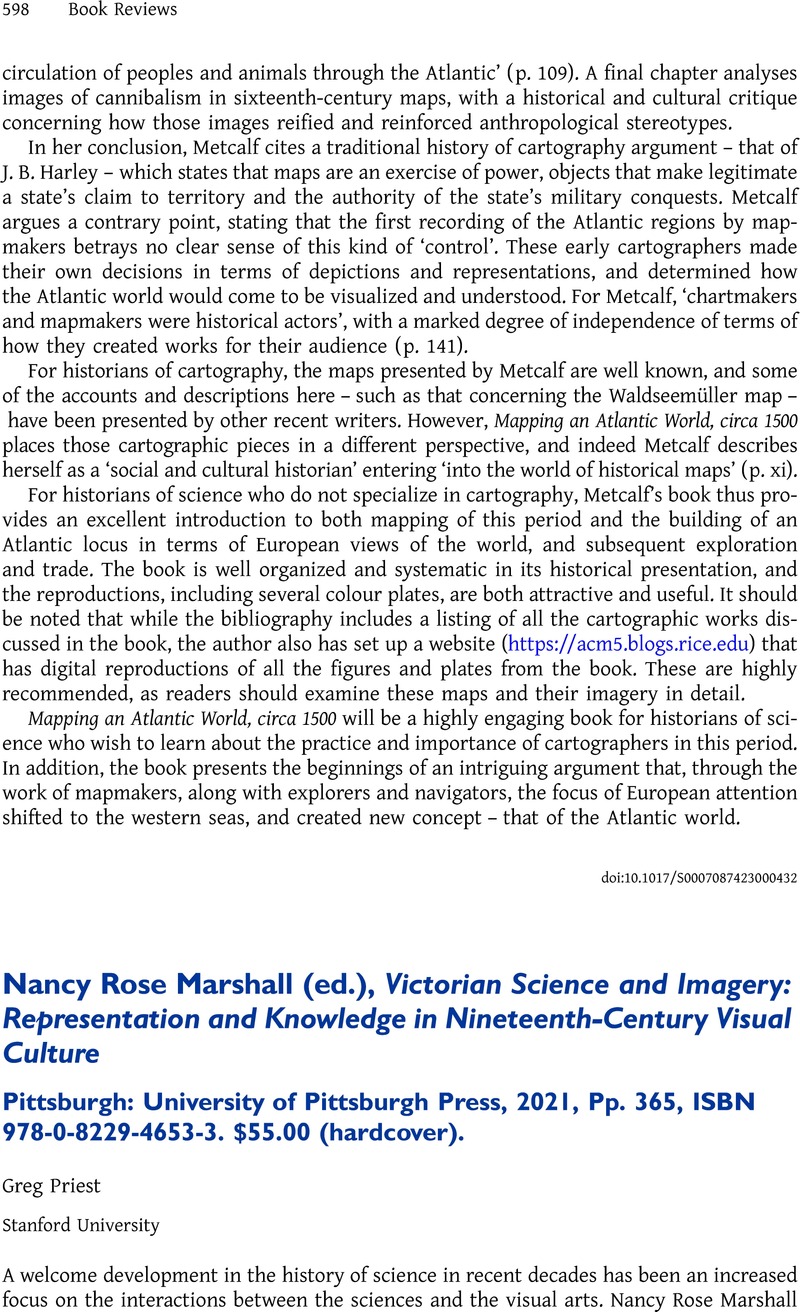No CrossRef data available.
Article contents
Nancy Rose Marshall (ed.), Victorian Science and Imagery: Representation and Knowledge in Nineteenth-Century Visual Culture Pittsburgh: University of Pittsburgh Press, 2021, Pp. 365, ISBN 978-0-8229-4653-3. $55.00 (hardcover).
Review products
Nancy Rose Marshall (ed.), Victorian Science and Imagery: Representation and Knowledge in Nineteenth-Century Visual Culture Pittsburgh: University of Pittsburgh Press, 2021, Pp. 365, ISBN 978-0-8229-4653-3. $55.00 (hardcover).
Published online by Cambridge University Press: 16 October 2023
Abstract
An abstract is not available for this content so a preview has been provided. Please use the Get access link above for information on how to access this content.

- Type
- Book Review
- Information
- The British Journal for the History of Science , Volume 56 , Special Issue 4: The Art of Gathering: Histories of International Scientific Conferences , December 2023 , pp. 598 - 600
- Copyright
- Copyright © The Author(s), 2023. Published by Cambridge University Press on behalf of British Society for the History of Science



